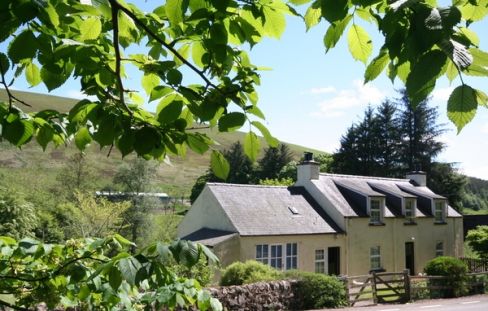Once only can I remember seeing red, but lets not go there. Recently I discovered that my local trout see red in a very interesting way. The lochs in my part of the Highlands are acidic; this is from the peat that blankets this part of the world. There are still people who cut and dry this for household fuel.
Aquatic insects find it difficult to extract oxygen from the water if it is acidic. To counter this their haemoglobin has to be more efficient. As it becomes more efficient it also becomes redder.
Just the other day a friend compared the insects in his garden pond to the insects in his water butt. His pond is more acidic. The insects from his pond are distinctly redder than those from his water butt.
This explained the choices which of flies we use. Tradition has us using lots of flies with red in them. My approach to the traditional flies has been to ask “What is it that makes this pattern successful?” then to look into how modern materials enable me to tie flies with more of what makes them work.
One great example of this is a fly we call a Cardinal Palmer. The starting point for this fly was the traditional Soldier Palmer. Pulling a Soldier Palmer through the surface of a loch has always been an effective method to attract trout.
Two things struck me about this fly. The Soldier Palmer is basically red, and bushy. So make it redder and bushier.
Redder was easy. First replace the red wool tail with Glo – Brite No. 4. That’s about as red gets. Then replace the red game head hackle with a dyed red hackle.
Bushier isn’t difficult either. The traditional fly has about 6 turns of natural red game cock hackle along the body. Mine have around 20 turns of red game (brown) dry fly saddle hackle. That’s how the cardinal palmer was borne.
Other flies got similar treatment. If you look in my loch fly box you will not find any flies with the traditional red wool tail. Glo – Brite No. 4 has replaced them all. You will however, find a few Soldier Palmers with the traditional six turns of hackle. Just sometimes the fish want the fly a little
lower in the water, usually during the colder months of the season. That’s why I still carry a few of these.
Here’s a selection of other flies that have this important red feature. All of them are, or are based on, traditional loch flies.
Of course red isn’t the only colour that helps in this way. Orange can be equally, and, sometimes, more effective. The orange of Golden
Pheasant tippet adds a tint to the fly that can make a huge difference. Often when a Williams Favourite will not produce a Black Pennel will (The only difference is the addition of a tail of GP tippet fibres).
It may be extreme, well that’s how it seems to me, but the Orange Rough Fly has proved to be one of our most reliable producers.
Another is the Dunkeld, which gets its orange from the palmered hackle.
Next time you set out to fish a new water it will pay to find out before hand what the PH of the water is. If it is lower than 7 red and orange should figure in your flies.
Alan.












